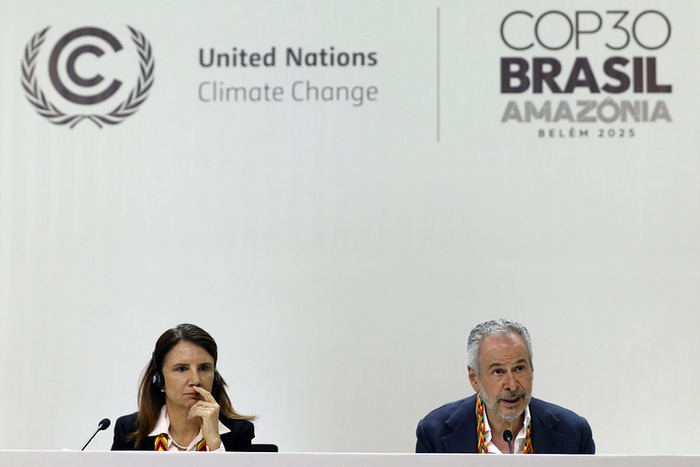The COP30 Presidency released the first iteration of the draft text, based on the four outstanding issues that have hogged the spotlight at Belem. Titled ‘Global Mutirão’ — which translates to collective effort in Portuguese — it is a response to Presidency consultations on the issues of trade, finance, transparency and the temperature limiting cause of 1.5°C, as agreed at the Paris Agreement.
This inclusiveness raises more questions than answers. Firstly, the text highlights a major dispute over the $100 billion goal, which hasn’t been met entirely. Secondly, for achieving the goal of climate finance of $1.3 trillion annually, multiple conflicting options have been offered. These include a legally-binding action plan to a focus on the new $1.3$ trillion per year by 2035 goal as well as a proposal for a ‘Belem Global De-Risking and Project Preparation and Development Facility’.
On the issue of adaptation, which has been a big ask from developing nations at the conference, the urgency is stressed, along with insufficient capitalisation of the Loss and Damage Fund. The draft offers three ways to scale up adaptation finance, including an explicit goal to triple adaptation finance from 2025 levels by 2030 or 2035.
“The latest draft of the Mutirao text captures important elements of what developing countries are demanding especially on climate finance, adaptation, and unilateral trade measures. It is up to the Parties to ensure that the most ambitious elements are moved forward in the political process. Developed countries must engage in good faith,” said Avantika Goswami, programme manager, Climate Change at the think tank Centre for Science and Environment (CSE).
Off center
According to Harjeet Singh, founding director of the Satat Sampada Climate Foundation, this might weaken the principle of Common But Differentiated Responsibilities (CBDR), according to which rich nations have to distribute public finance to other countries for their climate resilient needs. This follows the same course as the Baku to Belem roadmap.
“The text is an implementation disaster. While it gestures toward the $1.3 trillion finance goal and the need for international cooperation, its focus remains disproportionately fixed on private finance, capital markets, and concessional loans from MDBs, which are poison for countries already struggling with debt. It utterly fails to instruct developed countries to meet their legal, public finance obligations,” said Singh.
“On adaptation, the proposed option of tripling finance by 2030 or 2035 is immediately compromised by mentioning both grants and highly concessional finance. Concessional loans are a debt trap, and this document fails to close the huge gap in adaptation and Loss and Damage funding with the grant-based support communities desperately need.”
The divergent options related to climate finance in the text also don’t offer much hope for developing countries. “On the sticky issue of finance, there are widely different proposals in the text. The position supported by India relates to a legally binding action plan for mandatory delivery of finance while other proposals support creation of work programs to deal with the quantity and quality of the climate finance goal, an annual high-level ministerial round table on NCQG implementation, as well as Belem Facility for Implementation’ to de-risk projects in the developing world,” said Dr Vaibhav Chaturvedi of CEEW.
About The Author
You may also like
From fire to fallout: COP30’s uneasy compromise
Lula Pitches Fossil Fuel Phase-Out at COP30, But Can a Divided World Agree?
India commits to revised NDC, shifts pressure back to rich nations to deliver on climate finance at COP30
Tripling adaptation finance may be the only way to secure a win at COP30: Experts
India’s stance at COP30: No new commitments without real finance

